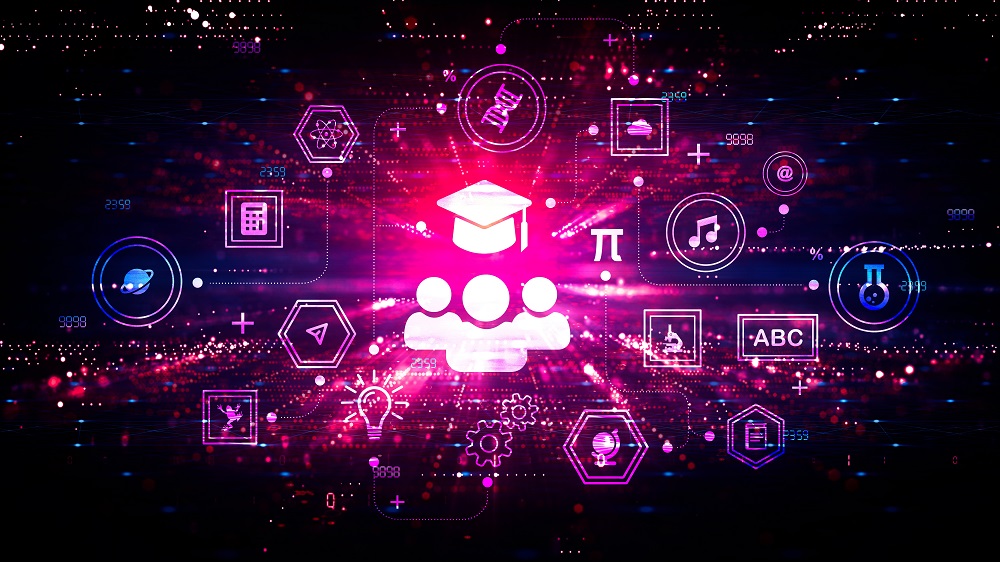Metaverse Education - How it is Transforming K-12 Schools
The Metaverse is the latest buzzword, and all for the right reasons. Its uses across industry sectors are ever-expanding. And it's going beyond the perceived domains of education, gaming, and entertainment. It is generating serious business.
- In fact, its commercial implication is vast, with Bloomberg predicting it to become an $800 bn market by 2024
The Metaverse enabled by web 3.0 seamlessly assimilates people, spaces, assets, and experiences. Even without being physically present, you get a sense that you are present in that environment.
This experience opens the door to many educational and enterprise prospects.
Let's see how metaverse education enriches the educational landscape, especially how K-12 schools can use and benefit from it.
Education in the Metaverse
Also referred to as the “mirror world” and the “special internet”, the Metaverse impact on higher and K-12 education is one of the most observed segments.
Metaverse Learning enables advance the knowledge economy and revolution of education. Students are able to study real-time 3D abstract concepts in Metaverse schools, which will facilitate a much deeper understanding of the subject matter. Using this, metaverse education becomes self-paced and personalized, leading to higher motivation and lesser dropouts.
Metaverse Education Implementation in K-12 Schools
The Metaverse is an immersive space where real-time content and lessons can be consumed. It enables a high degree of collaboration, communication, and interactivity.
However, schools would need specific infrastructural requirements to access the Metaverse.
To simplify the requirements, we have clubbed them as
• Computation Requirements
The Metaverse is a rich 3D rendered immersive twin digital world. Replicating and simulating this world would require high-end computational power.
• Storage Requirements
As the metaverse usage increase, so will the User Generated Content or USG. Moreover, digital assets and VR video streaming also consume space.
- For instance, it's estimated that an 8K VR headset for watching a 360-degree video for, say, 20 minutes would require 10TB of storage space.
Similarly, digital assets need storage in petabytes.
Communication Requirements
The Metaverse facilitates communication and data exchange where interactions happen via Wearables, IoT, sensors, etc. Live streaming is again a core process.
Communication happens in many ways in the Metaverse
For instance
- User to User
- Assets to Assets
- User to Assets
- Assets to User
Academic Metaverse Applications for K-12 Schools
- Maths and Geometry
In geometry, we learn about various 2D shapes in maths. Now, what if you could examine those shapes in 3D?
Understanding 3D geometry requires heightened spatial reasoning. In the traditional method, students draw out 3D drawings in 2D on a flat piece of paper.
Hence, they are limited in their visualizations of geometrical shapes. Solving tasks requiring them to deploy their spatial reasoning skills is a challenge. They cannot perform the rotations mentally; hence, these remain abstract concepts.
However, immersive platforms like the education metaverse powered by immersive technologies like Augmented Reality and Virtual Reality can bring these concepts alive.
K-12 students can rotate a shape, walk around and even enter it. They will be offered different interactive ways to visualize and engage with the content, enhancing their perception and understanding.
- Science Education
Like maths, science is an essential academic subject in the K-12 curriculum. In fact, everything around us involves science. The objects around us and within us are better understood with the help of science.
The scientific study requires observation and experimentation to arrive at the best possible solution. However, conducting experiments in physical laboratories is a time-consuming and expensive affair. It requires proper infrastructure and costly equipment.
Moreover, students have to conduct experiments in groups, which does not suit all students' learning requirements.
However, with VR-enabled labs, conducting experiments in the Metaverse is an excellent solution to all the above. Virtual labs also offer a safe and risk-free zone to conduct hazardous experiments. They offer scope to learn in-depth through repeated practice and personalized learning.
- Social Studies
We all have searched for places on a map. Now, what if you could travel on the map to identify locations and learn about their coordinates. Or take a space trip to Mars or probably the moon.
Or maybe even dive down into the deep oceans on the Earth to swim with the fishes and see first-hand the wide variety of aquatic life. Or students could also build their rain forests with their choice of flora and fauna that are native to the rain forests.
And would history students love to walk around with people of ancient cultures and observe their lifestyles while they live their reality?
Activity and Exploratory based learning are proven methods to increase absorption and retention of subject matter. It makes for more engaged and impactful learning outcomes.
When students are in charge of their learning process, it instills self-confidence and intrinsic motivation to become lifelong learners.
Conclusion
People may still not be aware that in the next few years, we will all live on the Internet instead of browsing it.
Gartner has already predicted that by 2026, people will spend at least an hour daily in the Metaverse. They could spend this time on education, business, social meeting, or shopping.
Education will significantly benefit from the immersive and student-focused learning that the Metaverse promotes. Though, as of now, many educationists are predicting the benefits, it is still an untapped world. A world filled with immense opportunities that will create a new reality to suit every person's individual needs.
Kompanions has been a trendsetter in the Ed-tech domain and introduced Augmented Reality and Virtual Reality lessons. It made learning content animated and exciting for students. Now with its next venture, the Edverse, it has given a new and futuristic dimension to the education industry.
If you are keen on knowing more about the latest cutting-edge Ed-tech solutions that have positively impacted millions of K-12 students, then sign up to our online learning platform to start immersive learning with 3d models.











